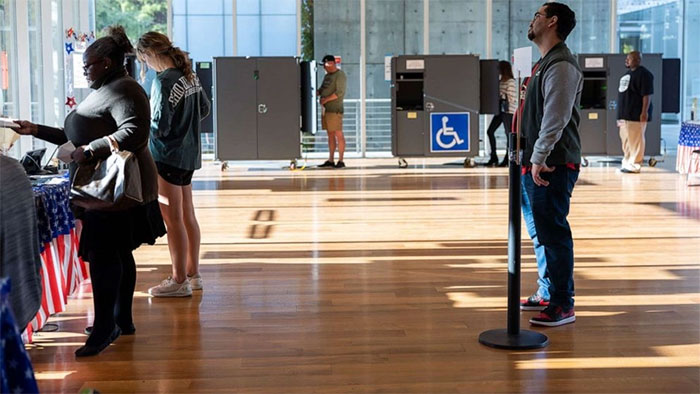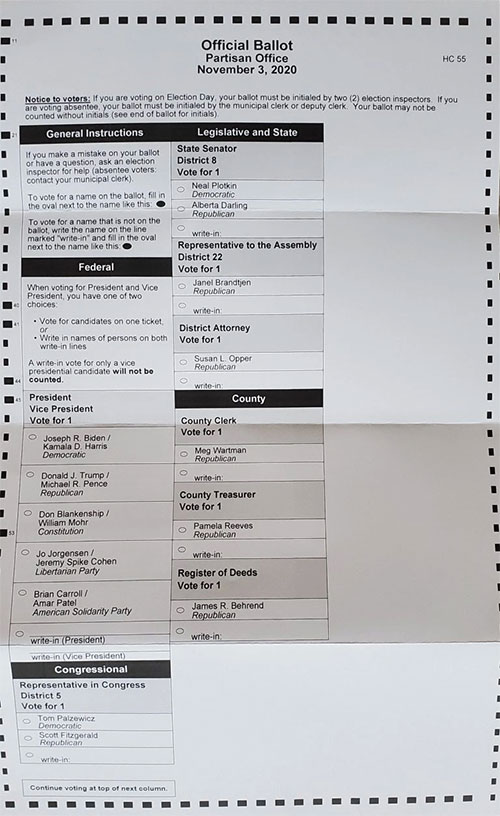On November 8, American voters will cast their ballots to elect new personnel for the country’s Congress, as well as to elect new governors in several regions.
What You Need to Know About Midterm Elections in the U.S.
- Election Day
- Who Can Vote
- Do Voters Need to Register?
- Who Can Vote Early?
- Voting by Mail
- Why Are Only One-Third of Senators Up for Reelection?
- All 435 House Seats Are Up for Reelection
- The “Flipped Seat” Scenario
- Gubernatorial Elections
- Special Elections
- Ranked Choice Voting
- Estimated Ballots
- Exit Polls
- Key Races
- When Will Results Be Available?
- Power in Congress
- The Role of the Vice President in Congress
While not as high-profile and attention-grabbing as presidential election years, each midterm election in the U.S. holds significant importance, as it partly determines which party will hold power in Congress for the next two years.
Midterm elections provide voters with the opportunity to shift the balance in Congress, which is responsible for drafting and enacting laws that affect every individual.
This year’s election occurs amid high inflation, alongside heated debates over gun control and abortion rights, which have added intensity to this election cycle.

Midterm elections in the U.S. will take place next week. (Photo: Morgan Stanley).
Election Day
Elections in the U.S. are held on the Tuesday following the first Monday in November. The Election Day for 2022 is November 8.
Who Can Vote
Most U.S. citizens aged 18 and older are eligible to vote. There are some exceptions, such as individuals convicted of felonies, who may still be able to vote in certain states.
Do Voters Need to Register?
According to CNN, except for North Dakota, voters need to register in order to vote. The registration deadline varies by state, with some requiring registration up to a month before the election. Many places now allow same-day registration on Election Day.
Who Can Vote Early?
Most states in the U.S. allow early voting, either in person or by mail, with regulations varying by state.

Voters casting early ballots in Georgia on October 22. (Photo: ABC News).
Voting by Mail
Officials in eight states, including California, Colorado, Hawaii, Nevada, Oregon, Utah, Vermont, and Washington, along with the District of Columbia, will automatically send mail-in ballots to voters. Some states allow all voters to vote early, while others require voters to provide a reason for not voting in person.
Why Are Only One-Third of Senators Up for Reelection?
Senators serve six-year terms, and federal elections are held every two years. Senate seats are divided into three groups based on the remaining term length, with the seats of those in Group III up for reelection this year.
All 435 House Seats Are Up for Reelection
The House of Representatives is the part of the federal government closest to the people, as House members are elected from smaller districts within a state, rather than senators who represent the entire state. Reelection of the entire House every two years enables voters to quickly and directly respond to government decisions.
The “Flipped Seat” Scenario
A “flipped seat” occurs when one party takes back a seat from an incumbent member of the opposing party in either the Senate or House.
Gubernatorial Elections
The timing of gubernatorial elections varies by state. 48 out of 50 states elect governors to four-year terms. New Hampshire and Vermont elect governors for two-year terms.
Most states hold gubernatorial elections during midterm election years, alternating with presidential elections.
The three states of Kentucky, Mississippi, and Louisiana hold gubernatorial elections one year before the presidential election, while the two states of New Jersey and Virginia hold gubernatorial elections one year after the presidential election.
Special Elections
When a senator retires, passes away, or leaves office before their term ends, the governor of the state represented by that senator will appoint a replacement. The official position is typically filled by voters in the next election cycle. The term served during a special election is separate from the senator’s six-year term.
For instance, Senator Mark Kelly won a special election in Arizona in 2020 to replace Senator John McCain, who passed away in 2018 while serving as the incumbent senator. In the 2022 election, Mark Kelly will run to remain in the Senate for the next six years.
House members cannot be appointed, so when a seat is vacated, the House must wait until the next election to fill that position. This year, a special House election will occur in Indiana to select someone to serve the remaining months of the term of Jackie Walorski, who passed away in August.

Sample ballot used in the 2020 election. (Photo: AP).
Ranked Choice Voting
Unlike most states in the U.S., where voters select one candidate for each office, voters in Maine and Alaska will rank multiple candidates in order of preference. If no candidate receives more than 50% of the votes in the first round, the candidate with the fewest votes will be eliminated, and votes for that eliminated candidate will be transferred to the second choice on the voter’s ballot. This process repeats until a winner is determined.
Estimated Ballots
Based on data from previous elections and pre-election surveys, organizations can predict how many ballots will be cast in the election. The estimated number of ballots may be lower or higher than the actual figure. Estimating the number of ballots can help inform people about how many votes are still to be counted after preliminary data is released on election night.
Exit Polls
Exit polls are conducted by media organizations to gather information from voters who voted early and those who vote on Election Day. These organizations will survey voters at polling places or call those who voted by mail and early.
Key Races
This term is often subjective, as political observers agree that only a few races are genuinely competitive in November, unlike many areas where results are typically clear early on.
Political parties will also spend more money campaigning in highly competitive areas, which often attract more media attention.
According to CNN, the race for the Senate seat in Pennsylvania, Nevada, and Georgia will be highly competitive, along with 19 seats in the House.
Key races may also arise from less competitive areas, but where the stakes are significant or where notable candidates are running.
When Will Results Be Available?
It is challenging to have results for all races on Election Day, especially with voters casting early ballots or voting by mail. Some races may take days or weeks to determine a winner.
The margin of personnel between the Democratic and Republican parties in both chambers of Congress is not large, so it may take several days to determine which party holds the majority.
Power in Congress
Political parties in the U.S. can wield more power if they control the majority of seats in one or both chambers of Congress, allowing that party to control the legislative committees and decide which issues will be voted on to become law. A party needs to control 218 out of 435 seats to hold a majority in the House, while in the Senate, the requirement is 51 out of 100 seats.
The Role of the Vice President in Congress
The Vice President’s official job is to serve as President of the Senate, although recent Vice Presidents have not spent much time at the Capitol.
In Senate votes that result in a tie, the Vice President casts the deciding vote.
Currently, the number of senators is evenly split between the two parties (with two Independent senators typically aligning with the Democrats), so the Vice President’s vote will help the Democrats maintain control of the Senate.





















































